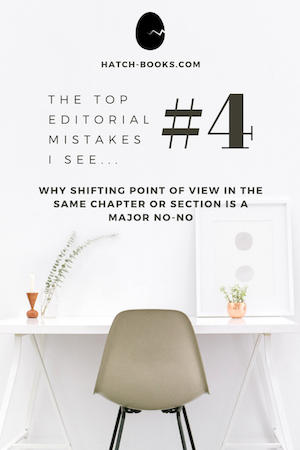This post is Part 4 of a 5-part series. You can read Parts 1-3 here, here, and here.
If you’re getting a lot out of this series, consider joining the Editing Vault for more free goodies!
I call Editorial Mistake #4 "the George R.R. Martin Effect" because Game of Thrones and works like it have made POV shifts very popular, especially among my sci-fi/fantasy clients.
In GOT, it makes sense. Martin has a broad cast of characters carrying out a geopolitical saga over three different continents. This leads to a slow burn that assumedly will end up with all of those perspectives converging in one place as they fight for control of the Iron Throne.
(If he can ever finish writing the darn thing, that is. #hottake)
This is the reader’s reward for slogging through all the weird names and mysterious backstories: seeing how beloved and reviled characters will interact with one another.
There are some downsides to POV shifts, though, that you should keep in mind for your own writing.
A Neutral or Negative Impact on Pacing
A wise man once said, “Nothing can kill a show like too much exposition.”
Too true. If your novel includes a lot of POV shifts at its outset, then its plot will take a while to gain momentum.
To add insult to injury, if you’re alternating point of view every other chapter or braiding three or more perspectives together, then the reader will have to go through the expository song and dance for multiple characters.
Unless you’re highly skilled at capturing and sustaining a reader’s attention, the pacing can completely stall, dampening your reader’s interest before your story even has the chance to get going.
A Neutral or Negative Impact on Character Presentation
Unwarranted POV shifts can also take a toll on how your characters are perceived by the reader.
For example, one of my clients wrote a main character who was quirky and entertaining when the story was told in a third-person perspective close to her. I loved this character! I wanted to be her best friend.
Ironically, though, when the narration shifted to her best friend’s close third perspective, I as the reader saw all of the downsides of her happy-go-lucky nature. For example, without the narration explaining the "method to her madness," the character's candor from this new perspective was less refreshing and more like sharing damning information with strangers.
As a result, the writer risked her main character becoming alienating and unrelatable to the reader. I encouraged the writer to revise, keeping the POV close to the main character and only shifting when the plot made it absolutely necessary (e.g., the protagonist was unconscious or not in the scene at hand). Once she did, the novel became that much more of a joy to read.
Action Items:
If you’ve heard me wax poetic about my Reese’s Theorem (i.e., “There’s no wrong way to write a novel”), then you know what I’m about to say is rare.
All the same, I’m going to take a hardline stance and state that:
You should only ever make a POV shift if it serves a purpose in your storytelling.
If you’re writing in first-person or close third-person perspective, ou should never shift point of view within the same chapter or section of that chapter. It can be very disorienting for the reader.
To ward off these mistakes in your own work, identify and write down the narrative POV for each chapter or section within that chapter.
Note any POV shifts that take place. How might the shifts impact the overall project in terms of pacing and character development?
If the impact is not a net positive, or if it happens in the middle of a section, revise so that the narration stays in the perspective it had prior to the shift.
